Environment
Contaminated sites, soils and sediments
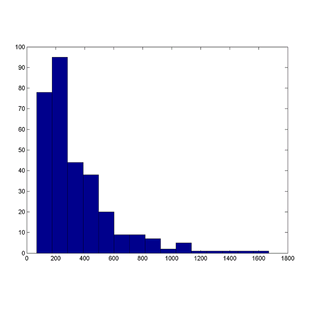 Ingredients for geostatistical modeling of soil contamination.
Ingredients for geostatistical modeling of soil contamination.
- Numerous (over 20) geostatistical studies of soil contaminations carried out for clients in France, Belgium and Switzerland: probabilistic assessment of the spatial distribution of contaminated soil using both direct and indirect information (electromagnetic, chromatographic, field portable X-ray fluorescence, organoleptic, etc.).
- Joint geostatistical simulation of contaminant grades in soils (up to 15 organic or heavy metal contaminants deemed as potentially hazardous to health).
- Change of support from analyzed soil samples to remediation soil blocks.
- Soil classification regarding environmental or health (exposure) risks, quantification of local uncertainties about soil classification.
- Uncertainty quantification on contaminated soil volumes and remediation costs.
- Risk analysis and decision making about contaminated soil management.
- Design of optimal cost effective reclamation schemes.
Environment (suite)
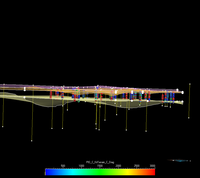 3D View
3D View
- Design and development of a plugin and workflow in Gocad dedicated to contaminated sites and soils.
- Managing, analyzing and visualizing spatiotemporal environmental data in all soil, groundwater and air media.
- Structural and geological modeling of sites.
- Geostatistical modeling of the spatial distribution of soil contaminants.
- Risk analysis and decision making about cost effective remediation strategies.
- Elaboration and development of optimization methods for soil sampling strategies: exploitation of fast field measurement instruments to conduct sampling surveys using a geostatistical approach.
- Design of remediation plans and verification sampling grids for contaminated sites.
- Co-founder of GeoSiPol: French association and working group for the application of geostatistics to contaminated sites and soils.
- Assistance and development of software tools for using TOUGH2/T2VOCA to evaluate population exposure to volatile organic components initially present in soils.
- Assistance for understanding and using T2VOCA, an extended version of TOUGH2/T2VOC (University of Berkeley, USA) for physically simulating flow and transport of volatile organic components from the subsurface to the atmosphere, together with the atmospheric dispersion.
- Development of pre, post and batch processing tools for automatically simulating and generating annual exposure maps based on a history of meteorological conditions.
- Assistance to apply the approach to a case study.
Environment (suite)
Groundwater
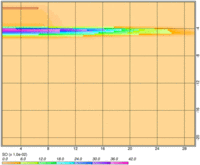
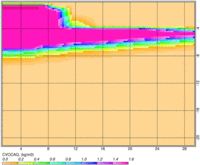
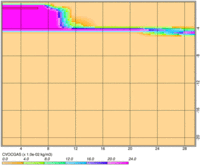 Multiphase and compositional flow simulation of light non-aqueous phase liquid (NAPL) using TOUGH2/T2VOC.
Multiphase and compositional flow simulation of light non-aqueous phase liquid (NAPL) using TOUGH2/T2VOC.
- Advice and assistance on the application of geostatistical methods for the diagnosis of contaminated aquifers.
- Advice and assistance on flow and mass transport simulations for detailed risk assessments and for deciding on optimal groundwater clean-up strategies.
- Technical assistance in modeling mass transport phenomena for soil and aquifer contamination studies.
- Development of a dedicated software for assessing the saturation profiles and spatial distribution of spilled light non-aqueous phase liquids (LNAPL) in water-unsaturated zones.
- Multiphase flow simulation of the contamination source of aquifers: TRANSPOL and MACAOH projects (contamination by light and heavy NAPL's) using TOUGH2/T2VOC.
- Advice and assistance to the design and analysis of well-tests for very low permeability rocks (environmental applications).
Environment (suite)
Others
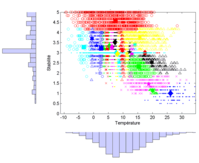 Classification of meteorological data for assessing annual air contamination exposure.
Classification of meteorological data for assessing annual air contamination exposure.
- Statistical and geostatistical approaches for estimating global and local landfill biogas (CO2 and CH4) emissions from flux and concentration measurements. In collaboration with INERIS (F), ISSeP (B) and Ephesia Consult (CH).
- Advice and assistance on the statistical analysis of air quality data.
- Characterization of karstic formations using geostatistical methods (mapping of voids for the geotechnical assessment of soil stability).
- Advice on the sampling strategy and the statistical analysis of mechanical lab tests for the valorization of industrial wastes.
- Development of an EXCEL module for multivariate Monte Carlo analysis
